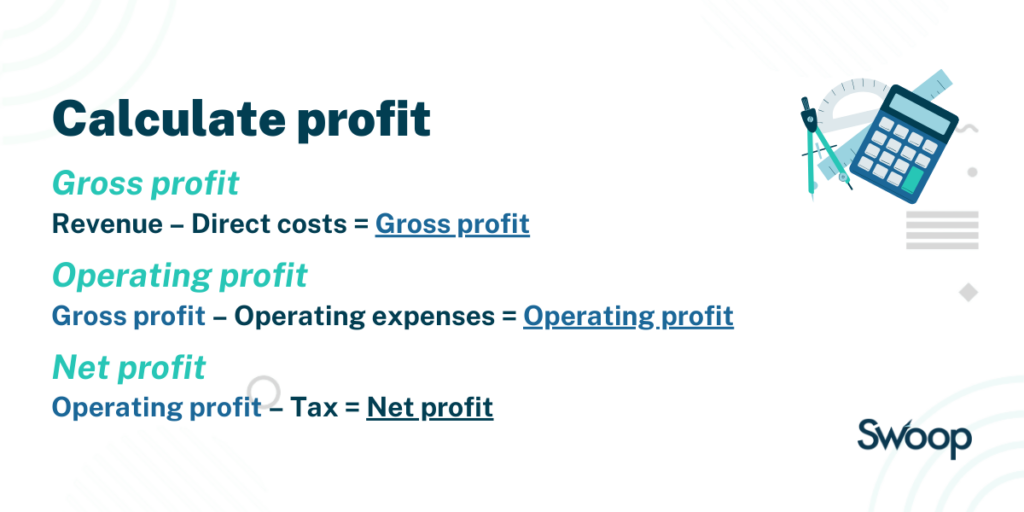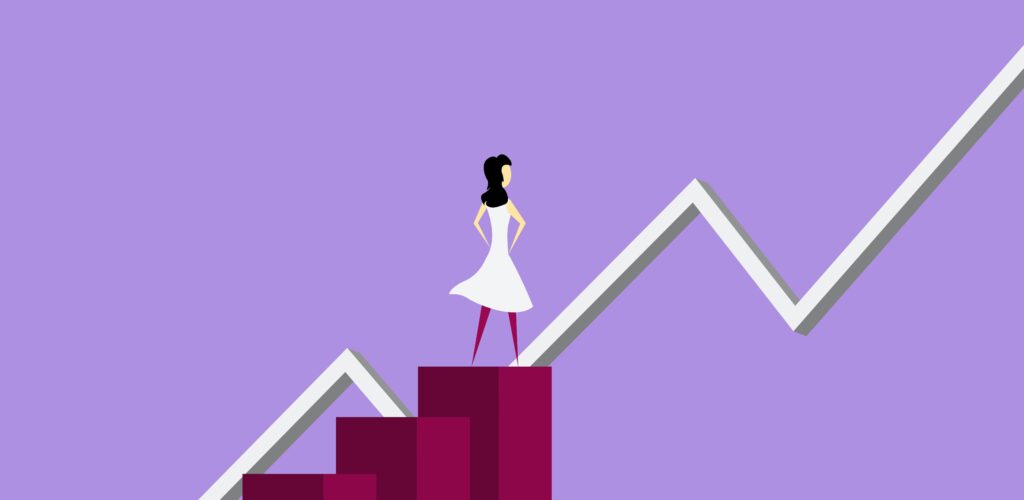As a small business, it’s crucial to understand how to calculate profit so that you know how well your business is performing. Read on to find out how to calculate profit for your business.
The formulas to calculate profit
Profit simply means your business revenue minus any expenses. In other words, it tells you how much your business has earned once all costs have been deducted. The profit can either be kept in the business or reinvested to finance future growth.
There are three main types of profit – gross profit, operating profit and net profit.

Gross profit
Your gross profit is your total sales minus your direct costs. These include the cost of raw materials and staff wages, for example. The gross profit shows you that you’re selling goods and services at a higher price than they cost you to produce.
You can work out your company’s gross profit with the following calculation:
- Revenue – direct costs = gross profit
Operating profit
Your operating profit is the income from sales once operating expenses, such as rent, utility bills and equipment, have been deducted. It excludes things like tax and interest and can show you how efficient your business operations are.
To work out your operating profit, carry out the following calculation:
- Gross profit – operating expenses = operating profit
Net profit
Your net profit shows that you’re making money once all expenses and taxes have been paid. This number comes last on a profit and loss statement which is why it’s known as the bottom line.
You can use the following calculation to work out your net profit:
- Operating profit – tax = net profit
Example of profit calculation
Eddie runs a hair salon and wants to work out his profit. The figures below will help with his calculations:
- Total revenue = £150,000
- Direct costs (salon products and staff wages) = £50,000
- Operating expenses (rent, utility bills, equipment) = £30,000
- Taxes = £10,000
To work out his gross profit, Eddie needs to subtract his direct costs of £50,000 from his total revenue of £150,000, giving him a gross profit of £100,000.
To work out his operating profit, Eddie needs to subtract his operating expenses of £30,000 from his gross profit of £100,00, giving him an operating profit of £70,000.
To work out his net profit, Eddie needs to deduct taxes of £10,000 from his operating profit of £70,000, giving him a net profit of £60,000.
What is profit margin?
Your profit margin is represented as a percentage rather than a figure. It basically says the same thing as profit, but it can be useful to have a percentage if you want to compare your business performance to that of other companies.
For example, if you want to work out your gross profit margin, you need to carry out the following calculation:
- (Gross profit / sales revenue) x 100 = gross profit margin percentage
To work out your net profit margin, it’s:
- (Net profit / sales revenue) x 100 = net profit margin percentage
Using the above examples, Eddie’s gross profit margin would be (£100,000 / £150,000) x 100 = 67%.
Eddie’s net profit margin would be (£60,000 / £150,000) x 100 = 40%.
Calculating profit FAQs
Profit is one of the main indicators of business performance. It’s simply the money you have left after paying for business expenses. The more profit you make, the better your business is performing.
As a business, your primary goal will be to make money. As a result, you might measure your business’ success by its profit. With lots of money going in and out of your business, it won’t always be easy to know how much money you’re making. But calculating your profit can help you to keep track of your business’ financial health.
This can also help you to establish whether you need to make improvements in certain areas. After all, you might be generating a lot of sales, but that doesn’t necessarily mean you’re making a decent profit. If costs are high, your profit might not be as healthy as you’d like, meaning you’ll need to see where you can make cutbacks.
The terms profit and profitability are often used interchangeably, but they are not the same. Profit is a specific number, while profitability is a relative amount. Profitability is a metric used to determine the scope of a company’s profit in relation to the size of the business. It can be used to measure how efficient the business is and ultimately, whether it will be a success or failure. Although a company can generate a profit, it doesn’t necessarily mean that the company is profitable.
Although profit and revenue might seem similar, they’re actually very different. Your revenue is the total amount you earn in sales income. Your profit is the income that remains once all expenses have been deducted.
If you’re looking to get funding for your business, perhaps through a business loan, it’s likely that the lender will want you to submit profit and loss statements. This will enable the lender or investor to see how well your business has been performing since it began operating. Your application for funding is more likely to be accepted if you can show that your business is profitable.



































 yet? Register here!
yet? Register here!